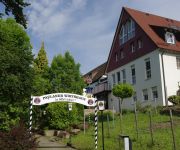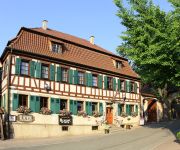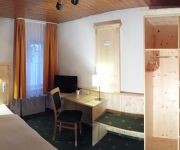Facts and Data
Webpages:
Official Unesco Page
UNESCO Commission of Germany
Kloster Maulbronn (Geopanorama)
Maulbronn Monastery (Denkmalpflege Baden-Württemberg)
Kloster Maulbronn (Deutsche UNESCO-Kommission)(german only)
Basis Data:
Unesco World heritage since: 1993
Size of heritage:
Coordinates:
Longitude: 8,813°
Latitude: 49,001°
Summary
Founded in 1147, the Cistercian Maulbronn Monastery is considered the most complete and best-preserved medieval monastic complex north of the Alps. Surrounded by fortified walls, the main buildings were constructed between the 12th and 16th centuries. The monastery's church, mainly in Transitional Gothic style, had a major influence in the spread of Gothic architecture over much of northern and central Europe. The water-management system at Maulbronn, with its elaborate network of drains, irrigation canals and reservoirs, is of exceptional interest.
Location on Map
Show bigger map on Openstreetmap
Introduction
The Maulbronn Monastery Complex is a UNESCO World Heritage site located in the District of Enz, in the State of Baden-Württemberg, Germany. This medieval monastery, founded in 1147, is renowned for its well-preserved architectural ensemble and its significant role in the development of Gothic architecture in Central Europe. Today, it stands as a testament to the rich history and cultural heritage of the region.
History
The Maulbronn Monastery was established by Cistercian monks from the French Burgundian monastery of Clairvaux. Under the patronage of the powerful Hohenstaufen dynasty, the monastery flourished and became a center of religious, cultural, and economic influence in the region. Over the centuries, the complex expanded, with the construction of additional buildings and the acquisition of vast agricultural lands.
During the Reformation in the 16th century, the monastery was secularized and transformed into a Protestant boarding school. This transition allowed the preservation of the architectural ensemble, as the buildings were adapted for educational purposes rather than being demolished or extensively modified.
Architecture
The Maulbronn Monastery Complex showcases a harmonious blend of architectural styles, including Romanesque, Gothic, and Renaissance elements. The centerpiece of the complex is the Romanesque monastery church, with its impressive vaulted ceilings and intricate stone carvings. The church's west facade features a stunning rose window, while the cloister, with its slender columns and pointed arches, exemplifies the transition from Romanesque to Gothic architecture.
Other notable buildings within the complex include the chapter house, the refectory, and the dormitory. The chapter house, with its ribbed vaults and ornate capitals, served as the meeting place for the monks. The refectory, where the monks dined, boasts a magnificent timber ceiling and a large fireplace. The dormitory, a two-story building, housed the monks' sleeping quarters and is a fine example of Renaissance architecture.
Current State
Today, the Maulbronn Monastery Complex is open to the public and serves as a cultural and educational center. Visitors can explore the various buildings and experience the serene atmosphere of the monastery grounds. The complex also houses a museum, which provides insights into the history and daily life of the Cistercian monks.
The monastery church continues to be used for religious services and concerts, showcasing its exceptional acoustics. The annual Maulbronn Monastery Concerts attract renowned musicians from around the world, further enhancing the site's cultural significance.
As a UNESCO World Heritage site, the Maulbronn Monastery Complex is carefully preserved and maintained. Ongoing restoration work ensures the conservation of the architectural elements and the protection of the site's historical integrity. The complex's inclusion on the World Heritage list has also increased awareness and appreciation of its cultural value, both locally and internationally.
Conclusion
The Maulbronn Monastery Complex stands as a remarkable testament to the architectural and cultural heritage of Germany. Its well-preserved buildings, spanning several centuries, provide a glimpse into the lives of the Cistercian monks and the evolution of architectural styles. As a UNESCO World Heritage site, it continues to inspire and educate visitors, ensuring the preservation of its historical significance for future generations.
Hotels and places to stay
Krone
Klosterpost
Lindner
Scharfes Eck
Lutz Gästehaus
Pension Klosterpost
Hotel Post
Weingut Kern Wengerterstube
Adler Gasthof
Zur Ölmühle Gasthaus
Videos from the area
Videos provided by Youtube are under the copyright of their owners.

















